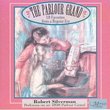| All Artists: David Matthews, Malcolm Nabarro, East of England Orchestra Title: David Matthews: Symphony No. 4, Op. 52 - Malcolm Nabarro Members Wishing: 1 Total Copies: 0 Label: Collins Classics Release Date: 5/24/1994 Genre: Classical Styles: Historical Periods, Modern, 20th, & 21st Century, Symphonies Number of Discs: 1 SwapaCD Credits: 1 UPCs: 5023391200823, 723721837624 |
Search - David Matthews, Malcolm Nabarro, East of England Orchestra :: David Matthews: Symphony No. 4, Op. 52 - Malcolm Nabarro
 | David Matthews, Malcolm Nabarro, East of England Orchestra David Matthews: Symphony No. 4, Op. 52 - Malcolm Nabarro Genre: Classical
|
CD DetailsSimilar CDs
|
CD ReviewsAnother fine release from this short-timed, short-lived seri Discophage | France | 01/19/2010 (4 out of 5 stars) "In 1992 Collins Classics launched this series called "20th Century plus" which consisted of short-timed CDs (16 to 37 minutes, priced accordingly), coming in a very slim jewel case, each devoted to a British contemporary composer. The series first came out in a batch of five, with Birtwistle's Earth Dances (20012, see my review of Birtwistle: Earth Dances), Maxwell Davies' Suite from Act I of his ballet Caroline Mathilde (20022, Davies: Caroline Mathilde-Concert Suite (from Act I)), Saxton's "In the Beginning" and "Music to Celebrate the Ressurrection of Christ" (20032, haven't been able to find an entry, either on this website or on the UK sister company, which surprises me, since all the others are listed), Benedict Mason's Lighthouses of England and Wales (20042, Benedict Mason: Lighthouses of England & Wales - Lothar Zagrosek) and Tavener's The Repentant Thief (20052, John Tavener: The Repentant Thief - Michael Tilson Thomas). Casken's Cello Concerto (20062, John Casken: Cello Concerto - Heinrich Schiff) and Hugh Wood's Piano Concerto (20072, Hugh Wood: Piano Concerto, Op. 31 - Joanna MacGregor) came out a year later. In 1994 came this CD with David Matthews' 4th Symphony (20082), and I am not aware at this point of my research of any further release (although Collins Classics, now gone, was active four more years). While I can see the interest for the producer to produce such short-timed CDs, possibly the potential public was not attracted, despite the reduced price, by such short collections, or maybe Collins didn't find the funding anymore. Some of the "20th Century plus" discs were reissued in larger collections by Collins (Maxwell Davies' piece, Sir Peter Maxwell Davies: Caroline Mathilde, Concert Suite from Act I of the Ballet / St. Thomas Wake / Threnody on a Plainsong for Michael Vyner / Ojai Festival Overture and Robert Saxton's two compositions: one on a Saxton collection, Robert Saxton: Violin Concerto / In the Beginning / I Will Awake the Dawn, while the other had in fact been previously released as the filler to Britten's Piano Concerto on Britten: Overture 'Paul Bunyan'; Piano Concerto/ Saxton: Music to Celebrate the Resurrection of Christ; Joanna Macgregor). Since the demise of Collins, NMC, a label devoted to British contemporary music, has been reissuing most of Collins' CDs in the genre (Birtwistle, Casken, Colin Matthews, Musgrave, Saxton, Weir... ), but as of yet very few of these 20th Century plus releases: Saxton, Casken - and this Matthews' Symphony, on an all David Matthews collection, David Matthews: Cantiga; September Music; Introit; Symphony No. 4.
Matthews 4th Symphony, completed in 1990, is a fine work, scored for a Haydn-like orchestra and couched in five movements, contemporary in its language but very accessible in its coloristic and atmospheric invention. The sinuous melodic lines that open the first movement reminded me of the melodic style so typical of Korean composer Isang Yun, and the symphony moves on to atmospheric sounds of nature (evoking birds or insects in a jungle) that recall Villa Lobos' Amazonian pieces. The movement's more dramatic section starting at 3:32 with a fugato from the strings brought Nielsen to mind. Throughout Matthews shows a keen coloristic and instrumental imagination. More of that atmospheric imagination can be heard in the slow movement, for strings alone, developing into more romantic passages with horn adding its wistful note at the very end. The second movement is uplifting in its breathless forward momentum and rhythmic pungency, and likewise, the fourth movement replaces the classical minuet by a boisterous and jaunty tango, with another atmospheric central trio. The finale is very Haydenesque (or Stravinskian if you like - the Stravinsky of the neo-classical ballets, that is) in its energetic and good-humored spirit sometimes skidding into something more propulsive and violent, and its virtuosic exchanges between woodwind and brass. Don't get me wrong if I refer to the music of other composers: this is to give an idea of Matthews' sound-universe. Some aspects may recall other composers, but Matthews has integrated those elements into a language that doesn't not soundl in the least made of bits and pieces. . TT 27:30. " |

 Track Listings (5) - Disc #1
Track Listings (5) - Disc #1

